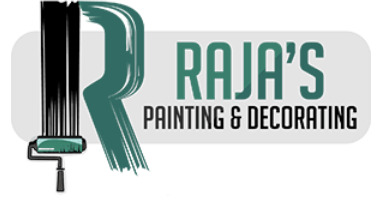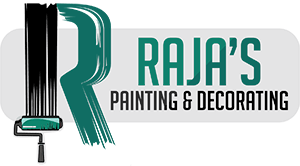Painting the exterior of your home is one of the most cost-effective ways to improve its appearance, protect it from harsh weather, and increase property value. For homeowners in Cranbourne, understanding the local climate, materials, and best practices can ensure a durable, beautiful finish. Whether you’re tackling the project yourself or hiring a professional, these exterior house painting tips will guide you through the process.
Why Exterior House Painting Matters in Cranbourne
Cranbourne experiences a mix of warm summers, cool winters, and moderate rainfall. These conditions can cause exterior paint to fade, crack, or peel if the wrong products or techniques are used. Exterior house painting not only enhances curb appeal but also protects surfaces from moisture, UV rays, and temperature fluctuations.
1. Choose the Right Time of Year
Timing is crucial. The best seasons for exterior house painting in Cranbourne are late spring, summer, and early autumn when temperatures are steady and humidity is low.
-
Avoid winter: Cold weather can prevent paint from curing properly.
-
Skip rainy days: Paint won’t adhere well on damp surfaces.
Pro Tip: Check the 7-day forecast before starting any painting project.
2. Prepare the Surface Thoroughly
The final look of your paint job depends more on preparation than the actual painting. Here’s how to get it right:
-
Wash the surface with a high-pressure hose or mild detergent to remove dirt, mold, and mildew.
-
Scrape off old, flaking paint using a paint scraper or wire brush.
-
Sand uneven surfaces to promote smooth paint adhesion.
-
Repair cracks or holes with exterior filler and allow it to dry completely.
-
Prime all bare or patched areas to seal them and enhance paint longevity.
3. Choose Quality Exterior Paint
All paints are not created equal. For exterior house painting, use premium acrylic latex paint, which is known for:
-
UV resistance
-
Mold and mildew protection
-
Flexibility to handle temperature changes
Look for paint brands that offer long warranties (10–15 years), which generally indicate better durability.
Recommended: Dulux Weathershield – A high-quality exterior paint suitable for Australia’s conditions.
4. Pick Colours That Suit Cranbourne’s Aesthetic
Colour matters—not just for personal preference but also for blending in with the neighbourhood and boosting resale value. In Cranbourne, common colour palettes include:
-
Earthy tones: Stone grey, taupe, or sage green
-
Neutral classics: White, beige, charcoal
-
Bold accents: Navy blue, burgundy, or black trims
Local tip: Check with the City of Casey for any heritage restrictions if your home is in a regulated area.
5. Use the Right Tools and Techniques
Using high-quality tools ensures a smoother finish and faster application. Essentials include:
-
Rollers for large flat surfaces
-
Angled brushes for trims and edges
-
Extension poles for high spots
-
Drop cloths to protect paths and garden beds
Apply paint in the shade rather than direct sunlight to prevent quick drying and streaks. Follow the “top to bottom” rule to avoid drips on freshly painted areas.
6. Apply Two Coats for Longevity
While one coat might look sufficient, it won’t last. Applying two coats of paint creates a durable barrier that resists peeling, fading, and weather damage.
-
First coat: Acts as a base and seals the primer
-
Second coat: Provides colour depth and protection
Let the first coat dry for 4–6 hours (or as recommended by the manufacturer) before applying the second.
7. Prioritise Safety
Painting exteriors often means working at heights or on uneven ground. Always:
-
Use stable ladders or scaffolding
-
Wear protective gear like gloves, goggles, and masks
-
Avoid working on wet or windy days
-
Keep children and pets away from the work zone
8. Know When to Hire a Professional
While DIY painting can save money, it’s not for everyone. Consider hiring a professional if:
-
Your home has multiple storeys
-
The surfaces are heavily damaged
-
You’re short on time or experience
A local expert will understand Cranbourne’s weather patterns, ideal products, and application techniques better than a generalist.
9. Maintain Your Painted Exterior
After painting, proper maintenance can extend the lifespan of your exterior finish:
-
Inspect annually for cracks, mold, or peeling
-
Clean surfaces with mild detergent twice a year
-
Touch up chips promptly to prevent water damage
10. Consider Environmental Factors Unique to Cranbourne
Cranbourne homes are subject to both urban air pollution and natural elements such as dust, pollen, and occasionally salt-laden air from coastal winds. These factors can degrade exterior finishes quickly.
Tips:
-
Homes closer to the coast may benefit from salt-resistant paint.
-
Use anti-fungal, self-cleaning coatings for easier maintenance.
11. Don’t Overlook the Details
Paint isn’t just for walls. Include features like:
-
Window and door trims
-
Fascias and gutters
-
Garage doors and fencing
Use gloss or semi-gloss finishes on trims for contrast and durability.
12. Test Paint Colours Before Full Application
Lighting in Cranbourne can change how a paint colour looks at different times of the day. Always apply sample patches and observe:
-
Morning and afternoon light
-
Shade vs direct sunlight
-
How the colour appears when dry
13. Know Local Regulations and Body Corporate Rules
Before painting, check:
-
City of Casey planning overlays
-
Heritage listing restrictions
-
Body corporate or estate covenants
Failure to comply may result in fines or mandatory repainting.
14. Estimate the Right Amount of Paint
A common mistake is buying too much or too little paint. To estimate correctly:
-
1L of paint covers around 12–14 m²
-
Multiply your wall surface area by the number of coats
Paint retailers often offer calculators or guidance if you provide measurements.
15. Choose Eco-Friendly Paints
Environmentally conscious Cranbourne homeowners are turning to low-VOC and non-toxic exterior paints. These are:
-
Better for your health and the planet
-
Just as durable and weather-resistant
-
Ideal for families and pets
Look for products with GECA or Green Star certification.
Summary of Key Tips
| Step | Why It Matters |
|---|---|
| Pick the right season | Ensures proper drying and adhesion |
| Surface preparation | Key to a long-lasting, smooth finish |
| Use quality paint | Resists weathering and UV damage |
| Paint multiple coats | Boosts durability and colour retention |
| Pay attention to detail | Enhances visual appeal and resale value |
| Prioritise safety | Protects both DIYers and professionals |
| Maintain regularly | Extends the life of the paint job and protects surfaces |
| Follow local rules | Prevents fines or repainting due to non-compliance |
Your Exterior Painting Success Starts Here
For homeowners in Cranbourne, exterior house painting is more than just an aesthetic upgrade—it’s an essential maintenance task that safeguards your investment and reflects your personal style. With the region’s specific weather patterns and environmental conditions, taking the time to plan and execute your paint job correctly can make all the difference.
Whether you’re preparing your home for sale or simply refreshing its look, following these tips will help you achieve a stunning, long-lasting result. If you’re unsure about tackling the project yourself, professional exterior painters in Cranbourne can deliver high-quality results tailored to your needs.
Frequently Asked Questions (FAQs)
-
How often should I paint the exterior of my house in Cranbourne?
Every 7–10 years depending on weather exposure and paint quality.
-
Do I need a primer before exterior house painting?
Yes, especially on bare, patched, or previously unpainted surfaces.
-
How much does professional exterior house painting cost in Cranbourne?
Typically between $4,000–$10,000 for a 3-bedroom home.


